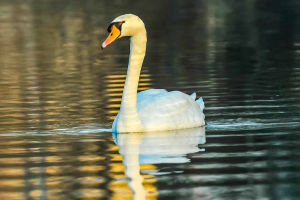Lykkers, have you ever wondered what makes lions so fascinating? Lions, scientifically known as Panthera leo, are large cats native to Africa and parts of Asia. They thrive in tropical grasslands, semi-deserts, sparse dry forests, and bushy areas.
Their bodies are usually a golden-yellow color, and their tails end with dark tufts of hair. Male lions are famous for their impressive manes, a mix of yellow-brown and black hair encircling their necks and faces.
Lions are among the heaviest cats alive today, with fully grown females weighing 110–150 kg, males between 160–200 kg, and the largest males surpassing 270 kg. In captivity, some can even reach over 300 kg. Their size and appearance make them truly iconic in the wild.
Living in a Pride
Unlike most cats, lions are social animals. We can think of them as the rare cat species that naturally live in groups called prides. Each pride operates like a tight team, hunting together and protecting one another. Their cooperative hunting techniques allow them to take down large or medium-sized prey, including zebras, antelopes, buffaloes, and warthogs.
Female lions usually lead these hunts, relying on speed, stealth, and teamwork, while males primarily focus on guarding the pride and maintaining territory boundaries. This teamwork places lions at the top of the food chain, earning them the title “King of Beasts,” a crown they share with tigers.
Origins and History
Lions first appeared in Africa during the Pleistocene era. Over the past 20,000 years, they expanded into West Asia, South Asia, and the Balkan Peninsula. Human activity, including habitat destruction and hunting, drastically reduced their populations. In Europe and parts of Asia, lions are now extinct. Today, wild lions survive mainly in sub-Saharan Africa and a small population in India’s Gir National Park.
Interestingly, genetic studies show that lions from North, West, and Central Africa are closer to Asian lions than to East and Southern African lions, highlighting the surprising complexity of their evolutionary history.
Two Subspecies
Scientists divide lions into two main subspecies. The Northern lions (P. l. leo) are found in Asia, North Africa, West Africa, and Central Africa. Southern lions (P. l. melanochaita) roam East and Southern Africa. Northern lions are fewer in number and face higher risks due to habitat fragmentation. Southern lions, on the other hand, are slightly more numerous but still face challenges from human encroachment and conflicts with local communities. Recognizing these subspecies helps us understand the diversity of lions and the importance of region-specific conservation efforts.
Behavior and Hunting Skills
We often picture lions resting in the sun, but they are highly skilled hunters. Female lions usually lead the hunt, using strategy, stealth, and cooperation to capture prey. Males primarily defend the pride and secure territory. Lions communicate through powerful roars, body movements, and scent markings. A lion’s roar can travel up to 8 kilometers, warning rivals and signaling pride members.
Hunting is rarely easy; it involves careful planning, patient stalking, and sudden bursts of speed. Observing a pride in action shows us more than just survival—it shows strategy, patience, and teamwork at its finest.
Life in the Wild
A pride’s social structure is fascinating. Lions form strong bonds, often grooming each other and sharing meals. Cubs are cared for collectively, with multiple females helping to nurse and protect them. Males may defend the pride aggressively, chasing off rivals or outsiders. Life in the wild is not only about hunting; it’s also about communication, cooperation, and protecting the next generation. Lions demonstrate how strength and social bonds combine to increase survival chances, which is a valuable lesson we can reflect on in our own lives.
Conservation Status
Sadly, lions are listed as vulnerable by the IUCN. Habitat loss, poaching, and human conflicts continue to threaten their populations. Conservation efforts focus on protecting reserves, reducing human-wildlife conflicts, and supporting anti-poaching initiatives. Visiting national parks like Tanzania’s Serengeti, Kenya’s Maasai Mara, or India’s Gir National Park allows us to witness these incredible animals while contributing to their protection. By supporting conservation programs, we play a role in ensuring that future generations can also experience the wonder of lions in the wild.
Why Lions Fascinate Us
We can’t help but admire lions for their strength, courage, and social structure. Observing a pride in action reveals cooperation, loyalty, and survival strategies that inspire awe. Lions remind us that life in the wild balances power with teamwork, solitude with community. They teach us about resilience, patience, and the importance of bonds—qualities that resonate even outside the animal kingdom.
Protecting the King
Lykkers, lions are more than majestic creatures—they are complex social animals with fascinating behaviors and histories. By learning about their lives, we can better understand the importance of conserving their habitats and protecting these iconic cats for future generations. Watching a lion pride thrive in the wild is a lesson in resilience, strategy, and the beauty of nature—and it’s an experience that stays with us forever. Let’s cherish and protect these incredible animals, so they continue to inspire us and generations to come.
Lions 101 | Nat Geo Wild
Video by Nat Geo Animals


